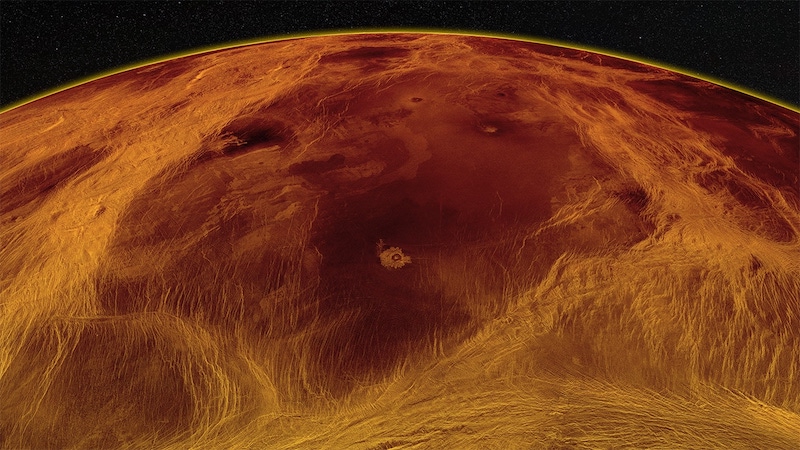
Cracked surface of Venus
Venus is a rocky world similar in size and density to Earth. It’s sometimes said to be Earth’s “twin.” Venus’ surface is far from Earthlike today, however. The cloud-shrouded planet is hot enough on its surface to melt lead. But scientists think that the surface of Venus used to be more like Earth in the past. It might have had a more Earthlike atmosphere, and even surface water (as in ancient oceans). Earlier this summer, researchers at North Carolina State University (NCSU) provided more evidence for an Earthlike Venus. It showed Venus may once have been geologically active and might still be active today.
The new analysis showed that the planet’s surface experiences pack ice tectonics. In other words, blocks of Venus’ crust – somewhat resembling pack ice on frozen lakes or the ocean – appear to be moveable.
This isn’t quite the same as plate tectonics on our planet, whereby Earth’s great land plates shift over time. But it’s similar. And, by the way, it’s not a given that Venus has a moveable crust. Mars doesn’t, for example. Neither does Earth’s moon.
The researchers published their new peer-reviewed findings in the Proceedings of the National Academy of Sciences (PNAS) on June 29, 2021.
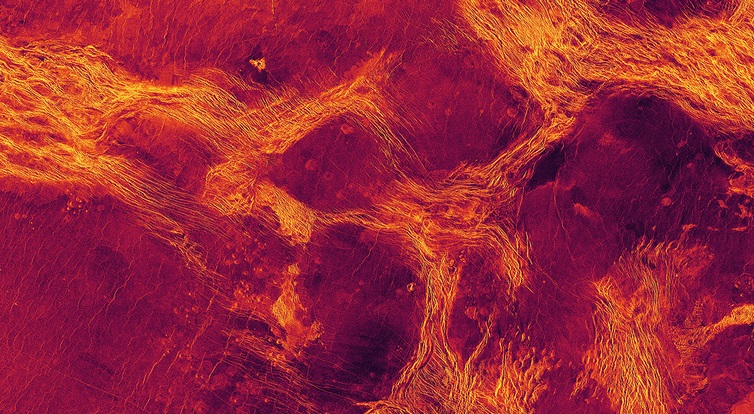
Pack ice and plate tectonics
The study found regions of Venus’ surface, in the lowlands where the crust is broken into blocks, that jostle against each other. This is how pack ice behaves on Earth. As lead author Paul Byrne of North Carolina State University explained:
Our new study shows, for the first time, that these bands of ridges and troughs often mark the boundaries of flat, low-lying areas that themselves show relatively little deformation. They are individual blocks of Venus’ crust that have shifted, rotated and slid past each other over time. And they may have done so in the recent past. It’s a little like Earth’s plate tectonics but on a smaller scale and more closely resembles pack ice that floats atop the ocean.
While these blocks are reminiscent of Earth’s tectonic plates, there are differences. On Earth, tectonic plates collide, move apart from or slide past each other. This happens in the region called the lithosphere (the crust and uppermost part of the mantle).
This colliding and sliding also happens on Venus. But the process does not create subduction zones (when two plates collide, the denser plate is subducted beneath the less dense plate) or mountain ranges.
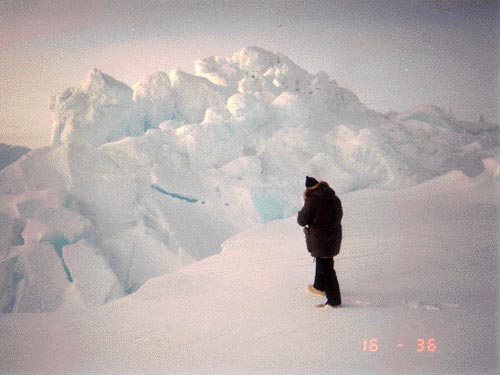

A sign of interior activity
The movement on the surface gives a hint to what might be going on underneath the surface. Byrne said:
It’s not plate tectonics like on Earth – there aren’t huge mountain ranges being created here, or giant subduction systems – but it is evidence of deformation due to interior mantle flow, which hasn’t been demonstrated on a global scale before.
Still, the tectonics seen on Venus are the closest thing to Earth’s tectonics found anywhere else in the inner solar system so far. As described in the paper:
These motions may be the result of mantle convection. If so, they constitute a style of interior–surface coupling not seen elsewhere in the inner solar system except for continental interiors on Earth. Venus’ fragmented, mobile lithosphere may offer a framework for understanding how tectonics on Earth operated in the Archean.
In other words, the tectonic activity on Venus might be similar to what occurred on Earth in ancient times, from about 4 billion to 2.5 billion years ago.
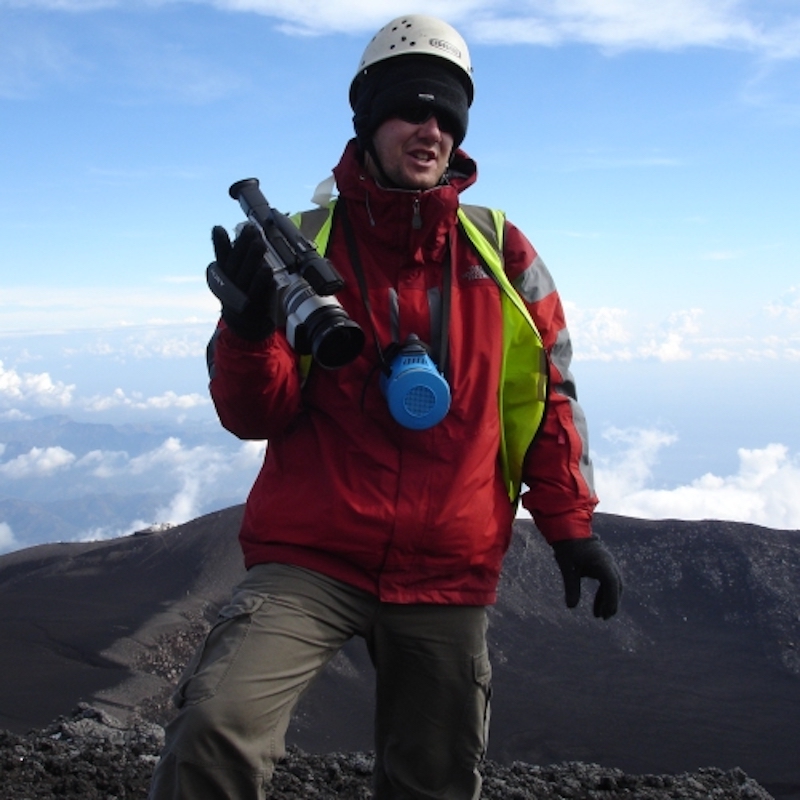
Magellan radar maps of Venus
The researchers made the discovery using radar images from NASA’s Magellan spacecraft, which launched in 1989 and orbited Venus until 1994. They not only saw regions containing the blocks, but also that the blocks had moved. The movement resembled broken pack ice on frozen lakes on Earth. Byrne said:
These observations tell us that interior motion is driving surface deformation on Venus, in a similar way to what happens on Earth. Plate tectonics on Earth are driven by convection in the mantle. The mantle is hot or cold in different places, it moves, and some of that motion transfers to Earth’s surface in the form of plate movement.
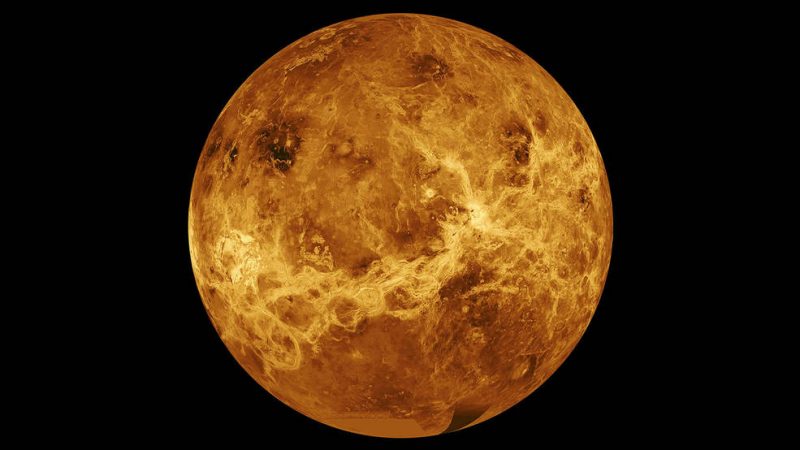
The type of tectonics observed seems to correlate to the sluggish interior of the planet. The deformation seen suggests that Venus is still geologically active today, an exciting implication. Byrne continued:
Showing that Venus’ geological engine is still running would have huge implications for understanding the composition of the planet’s mantle, where and how volcanism might be taking place today and how the very crust itself is formed, destroyed and replaced. Because our study suggests that some of this jostling of the crust is geologically recent, we may have taken a big step forward in understanding if Venus really is active today.

Tectonics on other worlds
Understanding tectonic processes on Venus helps scientists determine what the planet was like a few billion years ago and how it became the scorching world we see today. It can also provide clues about similar processes on other planets, and the younger Earth, as noted by Byrne:
The thickness of a planet’s lithosphere depends mainly upon how hot it is, both in the interior and on the surface. Heat flow from the young Earth’s interior was up to three times greater than it is now, so its lithosphere may have been similar to what we see on Venus today: not thick enough to form plates that subduct, but thick enough to have fragmented into blocks that pushed, pulled, and jostled.
The discovery of tectonics on Earth’s nearest planetary neighbor provides valuable clues about Earth’s “sister planet.” Not quite as geologically active as Earth, but more active than Mars or the moon, placing Venus somewhere in between. Venus is a complex and mysterious world, but we are gradually learning its secrets.
Bottom line: Scientists at North Carolina State University have found evidence of pack ice tectonics on Venus, suggesting the planet may still be geologically active.
Source: A globally fragmented and mobile lithosphere on Venus
Read more: Cool! Here’s how Venus would look as a terraformed water world











